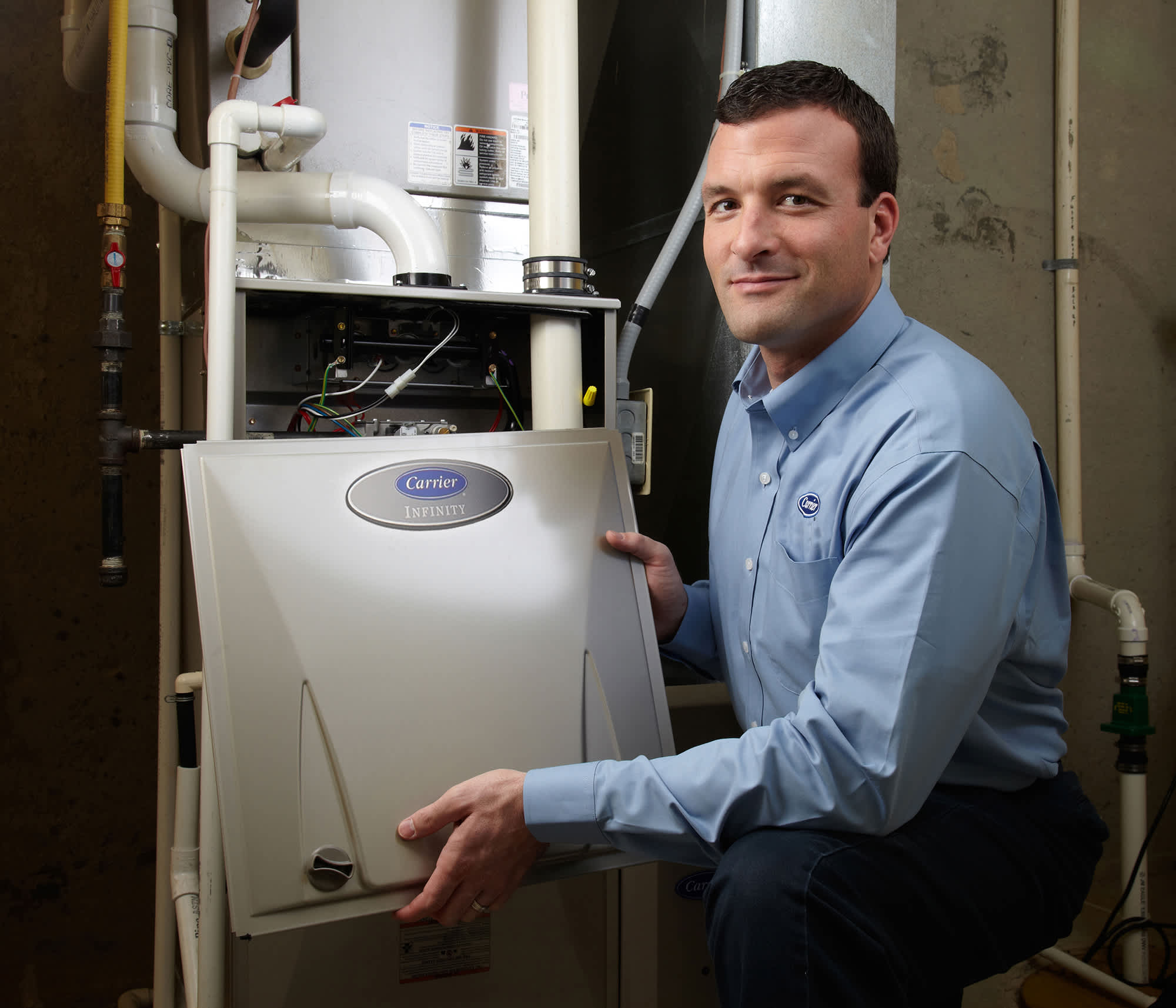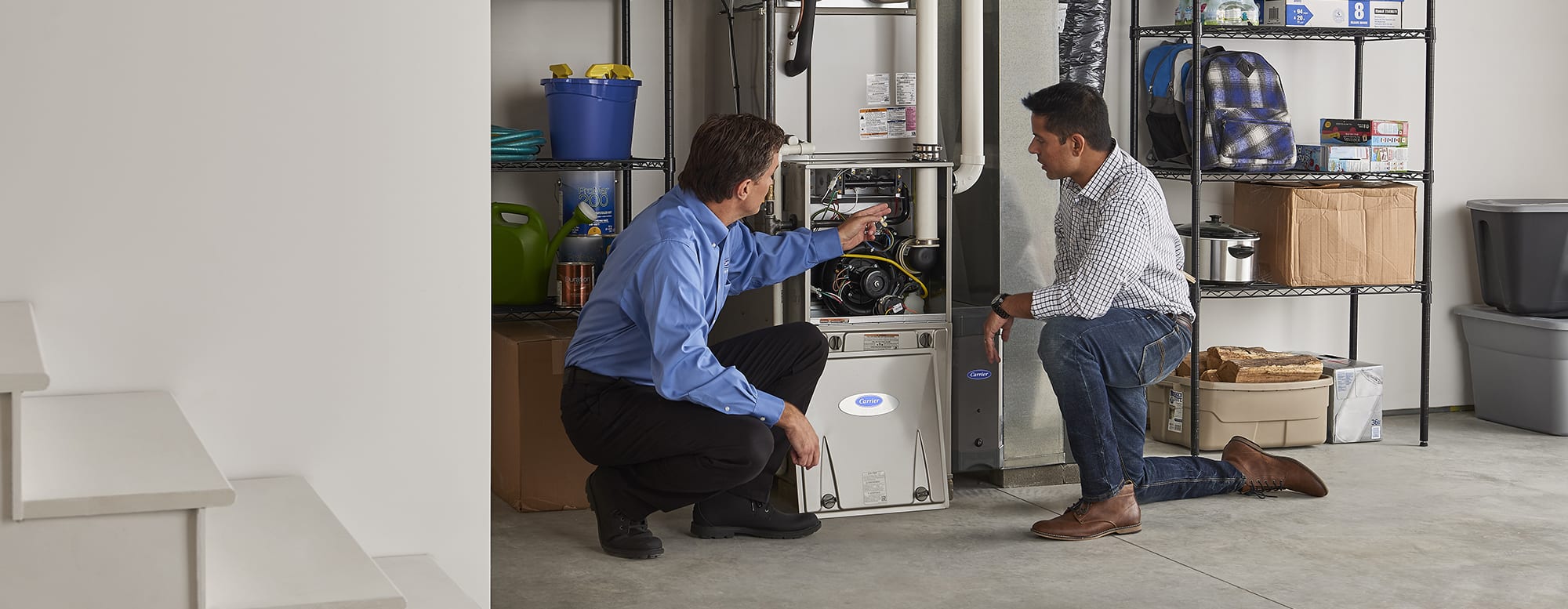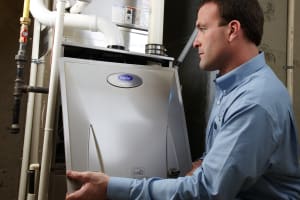Guide to Furnace Cleaning
To maintain your furnace and keep it running efficiently, we recommend annual cleaning and servicing from a trained HVAC professional. At a minimum it should be cleaned at the beginning of each heating season, but repeating mid-year will help keep your furnace in peak condition and help prevent future problems.
Find a certified HVAC professional to service and clean your furnace.
Why is Furnace Cleaning Important?

While cleaning a furnace is not overly complicated, it does offer a number of benefits for the long-term health, efficiency, and reliability of your comfort system. Regular cleaning helps remove dust, debris, and buildup that can reduce airflow, strain components, and lower energy efficiency. It also helps prevent unexpected breakdowns, saving homeowners from costly furnace repair or replacement. Keeping your furnace clean supports safer operation, improves indoor air quality, and ensures your heating system runs smoothly season after season.
HOW A PROFESSIONAL WILL CLEAN A FURNACE IN 8 STEPS

1. Turn off Power and Gas to the Furnace
Before attempting to clean your furnace, your local Carrier dealer will shut off power to the unit and also shut off the gas. At this point it will be safe to remove the cabinet doors and begin light cleaning and dust/dirt removal using a small brush, damp cloth, vacuum or compressed air.
2. REMOVE THE BLOWER
3. CLEAN THE BLOWER
Knowing how to clean a furnace blower isn’t just important for heating performance – if the blower is cleaned, it can improve the performance of your central air conditioning system as well. That’s because both use the same blower/air handler to circulate air into and out of the system. To do the job thoroughly, the first thing an HVAC professional might do is remove the blower assembly or “squirrel cage” to have better access for both inspecting and cleaning.
Keeping the blower assembly clean can help improve airflow and motor efficiency while reducing the risk for early motor failure. Replacing a blower can be an expensive repair, so keeping it operating at its best can help save money in the long run. And, by keeping the motor housing and blower motor cleaner and more dust-free, you might enjoy improved indoor air quality as well.
4. CLEAN THE FURNACE FLAME SENSOR
A furnace flame sensor is very important for safe operation of your furnace. Located on the burner assembly, it looks like a metallic rod. The flame sensor detects the presence of a flame when the gas is on, then shuts down the system if no flame is detected. A dirty flame sensor can cause a disruption of furnace operation.
To clean the sensor, your local HVAC system professional will turn off the furnace and remove the sensor from the burner assembly. Because the sensor is exposed to flame on a regular basis, it is prone to gritty build-up on its surface which will need to be lightly sanded and wiped off. If performance does not improve after a cleaning, the sensor may need to be replaced.
5. Lubricate the Fan Motor
6. CLEAN THE FURNACE COILS
When we discuss how to clean furnace coils, we are actually talking about how to clean your evaporator coil. The evaporator coil is attached to your furnace cabinet and is a crucial component for your central air conditioner or heat pump. Keeping it clean will help maintain cooling or heating performance and energy efficiency.
To clean the coil, your HVAC service technician will typically turn off the system and remove the access panel from the coil cabinet. Techniques may vary, but some technicians will apply a “rinseless” coil cleaner spray and follow up with a soft, gentle brush to remove difficult-to-remove debris.
7. Replace the Air Filter
8. Activate the Burners
WHEN TO CONTACT A PROFESSIONAL FOR FURNACE CLEANING SERVICE
While basic furnace cleaning tasks—like replacing air filters or wiping down accessible components—can be handled safely at home, more technical steps require a trained HVAC technician. Tasks such as deep duct cleaning, inspecting burners, calibrating system components, or lubricating motors are best left to professionals to ensure safety, efficiency, and long-term reliability.
Contacting a professional for furnace cleaning is important because it helps prevent hazards, improves furnace operation, and extends the life of your system. A local Carrier dealer can thoroughly evaluate your furnace, address hidden issues before they escalate, and recommend solutions to optimize performance and energy efficiency.
Warning signs that indicate you should call a professional include:
- Unusual noises – Banging, rattling, or squealing sounds coming from the furnace.
- Persistent burning smells – Odors that linger after the system starts.
- Excessive dust buildup – Dust accumulating in the home even after cleaning and replacing filters.
- Yellow or flickering pilot light – A healthy flame should be steady and blue.
- Uneven heating – Some rooms are noticeably warmer or cooler than others.
- Increased energy bills – Sudden spikes in utility costs without higher usage.
- Frequent cycling – Furnace turns on and off more often than usual.
- Reduced airflow – Weak air from vents even with a clean filter.
- Visible soot or rust – Around vents, registers, or the furnace itself.
- Poor air quality – Increased allergy, asthma, or respiratory issues in the household.
Regular professional cleaning and inspection not only address these warning signs but also provide long-term benefits such as improved safety, enhanced energy efficiency, and reduced likelihood of expensive repairs or furnace replacement. Scheduling routine professional service ensures your furnace continues to run smoothly and reliably throughout its lifespan.
HOW MUCH DOES FURNACE CLEANING SERVICE COST?

FAQs on Furnace Cleaning
- Is your furnace blowing cold air?
- Discover what to expect with a furnace tune-up
- Read more about proper furnace maintenance
- Discover the signs you need a new furnace
- Browse Carrier furnaces
- Discover the causes of a furnace short cycling
- Furnace troubleshooting tips
- Learn about the different parts of a furnace
- Furnace repair & service
- Changing furnace filters
- Learn about heating repair



